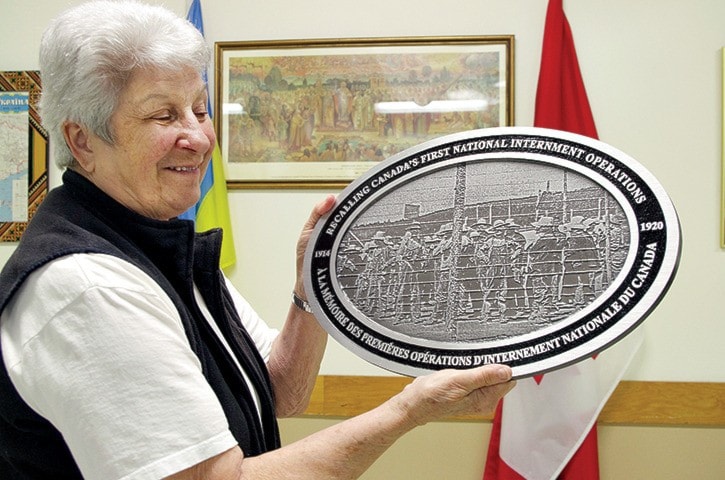A plaque on the Nanaimo waterfront is the city’s only public acknowledgement of its First World War internment camp – but that’s about to change.
The Ukrainian Canadian Civil Liberties Foundation will see a wave of 100 plaques unveiled across the country this August on the centennial of Canada's first national internment camps. The initiative, considered a first in Canadian history, will end in Nanaimo, where 125 to 200 Ukrainians and other eastern Europeans were imprisoned under the War Measures Act between 1914-15.
Lubomyr Luciuk, project lead for the foundation, said the initiative commemorates a time of repression and trauma for the communities affected, but it’s also about recognition and reconciliation.
“It’s kind of a reminder to any Canadian ... that in times of domestic and international crisis it's really important that you remain vigilant in your defense of your civil liberties and rights,” Luciuk said.
The Canadian government invoked the War Measures Act a century ago on Aug. 4 as Britain joined the war against Germany and Austria-Hungary. It would be the same act used to intern Japanese-Canadians during the Second World War.
Under the measure, thousands of eastern European immigrants were registered as enemy aliens because of the perceived threat to national security and more than 8,500 women, children and men would be interned in 24 camps across Canada. Most of them were Ukrainians and civilians, according to Luciuk, who said their valuables were confiscated, restrictions placed on their freedom of speech and they were forced to do heavy labour.
In Nanaimo, some of the trees along the Stewart Avenue boulevard were planted by internees from the old provincial jail near Stewart and Townsite Road. The camp, which opened Sept. 20, 1914, would keep all prisoners of war from Vancouver Island. The Nanaimo Archives show many internees were coal miners from places like Extension, South Wellington and Ladysmith. They were put in a stockade-style compound with four-metre high wall, although reportedly they were well-treated and allowed to go to church or compete against outside teams in soccer.
Internees were transferred to a camp in Vernon in 1915.
Leona Osowetski, member of the Ukrainian society and St. Michael the Archangel Ukrainian Catholic Church, said plaques will bring awareness to the history.
The unveiling will happen at 11 a.m. on Aug. 22. One plaque will be located at St. Michael church on Victoria Avenue while another will be added to the waterfront by the City of Nanaimo. It's in addition to a cairn installed in 1997 near the yacht club.
